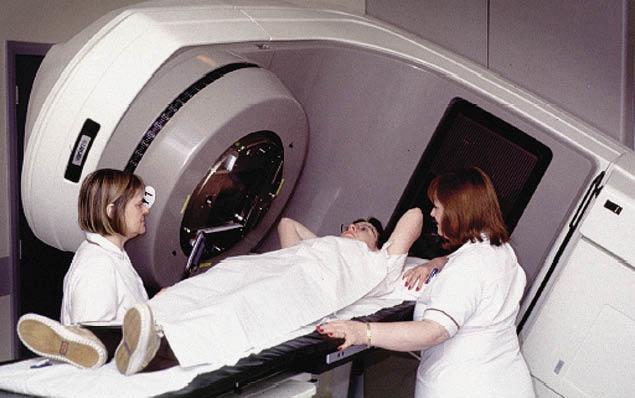
Consolidative radiotherapy produces excellent outcomes in patients with diffuse large B-cell lymphoma (DLBCL), according to a recent Singapore study.
Enrolling from the National University and Tan Tock Seng Hospitals in Singapore, researchers retrospectively assessed 74 DLBCL patients (median age, 61 years; 58 percent male). Outcomes of interest were overall (OS) and disease-free survival (DFS). Only patients receiving treatment with curative intent were eligible.
Of the participants, 58 percent had early-stage malignancies and 43 percent had bulky disease. Majority (61 percent) received at least six chemotherapy cycles, while approximately two-thirds underwent radiotherapy of at most 36 Gy. In terms of cell-of-origin, 27 percent, 30 percent and 43 percent were of germinal centre (GC), nongerminal centre (NGC) and unknown origins, respectively. [Radiol Oncol 2019;doi:10.2478/raon-2019-0045]
Fifty-three patients achieved complete remission after radiotherapy, yielding an overall rate of 72 percent. DFS was significantly better in these participants (hazard ratio [HR], 11.05, 95 percent confidence intervals [CI], 4.11–29.69; p<0.001).
On the other hand, the presence of bulky disease appeared to worsen DFS (HR, 3.16, 95 percent CI, 1.02–9.78; p=0.04).
Multivariable Cox regression analysis confirmed these findings. Both complete response to radiotherapy (HR, 5.64, 95 percent CI, 2.78–11.45; p<0.001) and disease bulk ≥7.5 cm (HR, 6.10, 95 percent CI, 1.34–27.87; p<0.02) were significant predictors of DFS. Cell-of-origin, on the other hand, was not.
The 5-year OS and DFS estimates were 92 percent and 73 percent, respectively. In both cases, median survival thresholds were not achieved. Only response to radiotherapy emerged as a significant predictor of OS (HR, 6.26, 1.53–25.7; p=0.011).
“We report encouraging survival and disease control rates in this cohort,” said researchers, pointing out that the relative advantage afforded by complete radiotherapy response was in consonance with the wide literature. “This was not an unexpected finding as it is likely suggestive of better tumour biology.”
The consensus around bulky disease, on the other hand, is less uniform, with definitions varying from study to study. Nevertheless, it is typically an indication for consolidative radiotherapy, they continued. “As such, it is likely that consolidative [radiotherapy] reduces the risk of disease recurrence but does not prevent it.”
This was reflected in the present findings, where 13 patients were reported to have failed treatment. Five failures occurred inside the treatment field, while 11 and 10 cases were reported at nodal regions and at distant sites, respectively. The median time to local recurrence was 6 months. Three of the five failure cases survived to the final follow-up while the other two died to disease progression.
“Our data spans over 15 years, where staging methodology, chemotherapy choices and response assessment modalities have evolved,” said the researchers. “Moreover, there is evidence to show that the survival of DLBCL patients has improved over the years.”
“A well-designed randomized controlled trial, comparing patients treated with chemotherapy alone, would be useful to determine the additional benefit of [radiotherapy],” they added.